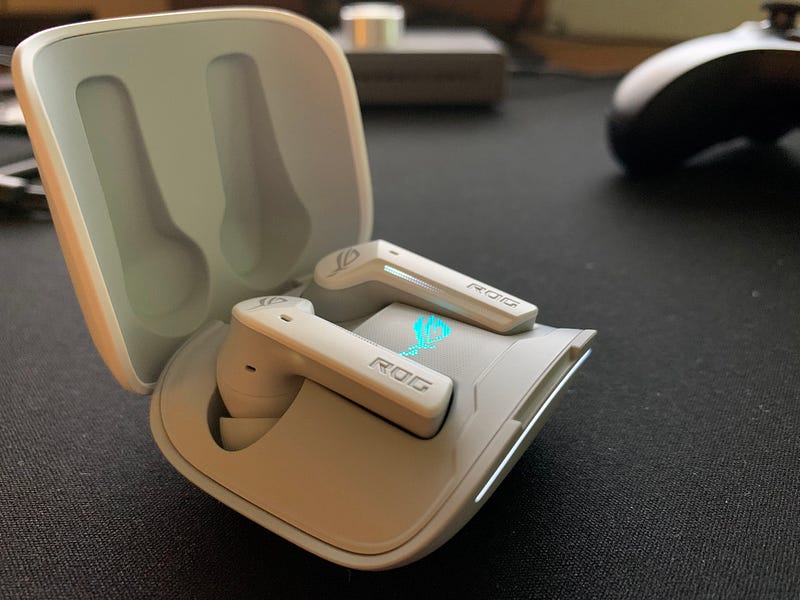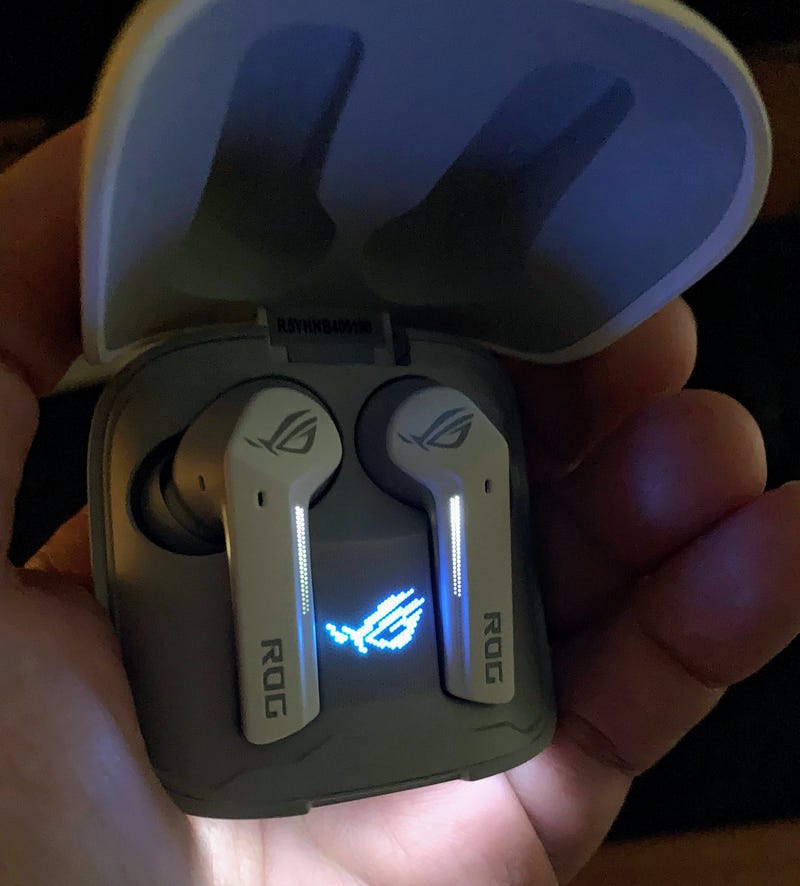Asus ROG Cetra: Stylish Earbuds with Flaws in Performance
Written on
Chapter 1: Introduction to the ROG Cetra
The world of gaming headsets has evolved significantly over the years, and the Asus ROG Cetra wireless earbuds are a recent entry into this space.

Photo taken by the author.
I have been a fan of the ASUS ROG Ally since its summer release, managing to snag one on launch day despite the intense hype surrounding it. Along with this, Asus introduced a variety of accessories, including cases, additional power adapters, and an Xbox controller. Notably, they released a "new" version of their wireless gaming earbuds, the ROG Cetra, which actually debuted last year in black. This year's model features a white design that complements the Ally's case, enticing me to purchase them shortly after acquiring the Ally. However, in hindsight, I should have waited.
Despite being a refresh of an older product, the ROG Cetra boasts an impressive feature set on paper. Priced at a reasonable $99 (available on their official site), they are more affordable than many wireless gaming earbuds that typically cost around $150. These earbuds come equipped with active noise cancellation (ANC) and a wireless charging case compatible with Qi charging pads. Such features are often missing or more costly in competing brands like HyperX and Razer.
Nonetheless, while I appreciate the impressive features, I found significant design and audio performance flaws that hinder my recommendation. The ROG Cetra feels reminiscent of older gaming headset designs, but unfortunately, not in a positive way.
Section 1.1: Audio Performance
When it comes to sound quality, the Cetras deliver a warm and thick audio profile that leans towards a bass-heavy experience, making them suitable for casual gaming and background music. While they do provide enough treble for detecting enemy positions in games, they lack the clarity and detail found in many contemporary gaming audio products. Although you can adjust various EQ settings, I found the default sound profile to be the most appealing.

The earbuds feature an oval-shaped nozzle designed for comfort, but I struggled to achieve a secure fit with any of the provided ear tips.
Section 1.2: ANC and App Control
Controlling ANC modes requires the use of the mobile version of Asus' Armoury Crate app, which is less user-friendly compared to its desktop counterpart. It's frustrating to rely on a separate application to manage earbuds designed for my portable gaming device. The earbuds offer two ANC modes—heavy and light—though neither provides the profound noise cancellation found in pricier models. They do have a noticeable effect on background sounds, improving bass accuracy when ANC is activated.
The ambient sound mode allows some external audio to seep in, but the built-in microphones struggle to capture sounds effectively. While these ANC earbuds are reasonably priced, they don't quite meet high expectations.
Chapter 2: Design and Comfort
The first video titled "These are the BEST wireless gaming earbuds yet! Asus Rog Cetra Speednova Review" offers a comprehensive overview of the product, highlighting both its strengths and weaknesses.
In the second video, "Unbox & Impressions of the Asus Rog Cetra True Wireless Speednova Gaming Headphones!" viewers can experience the initial unboxing and first impressions of these earbuds.
While the design aims for comfort with its angular shape, I experienced discomfort during extended use due to the way the edges pressed against my ear.
Section 2.1: RGB Features and Battery Life
The aesthetic appeal includes RGB lighting, but it’s limited to the charging case, which seems like a missed opportunity. Battery life is rated at five hours with ANC activated and slightly longer with it off. The charging case extends usage by about 27 hours and supports wireless charging, although fast charging requires a wired connection.
One of the standout features is the low latency gaming mode, easily activated via the touch surface on the right earbud. The latency reduction is noticeable, making these suitable for gaming. However, the lack of volume control on the touch panels is puzzling, considering the abundance of cheaper models that include this essential function.
I found myself longing for the HyperX Cloud MIX Buds, which, despite lacking noise cancellation and wireless charging, excel in sound quality and comfort. They offer longer battery life and a better fit, making them a more appealing option despite their higher price.

In conclusion, while the Asus ROG Cetra earbuds pack a variety of features for their price, they fall short in both sound quality and comfort. I personally prefer models that prioritize fundamental performance over added features. A redesign that offers a more ergonomic shape could significantly improve their appeal. The current iteration of the ROG Cetra illustrates why many gaming brands have moved away from harsh angular designs in their audio products.